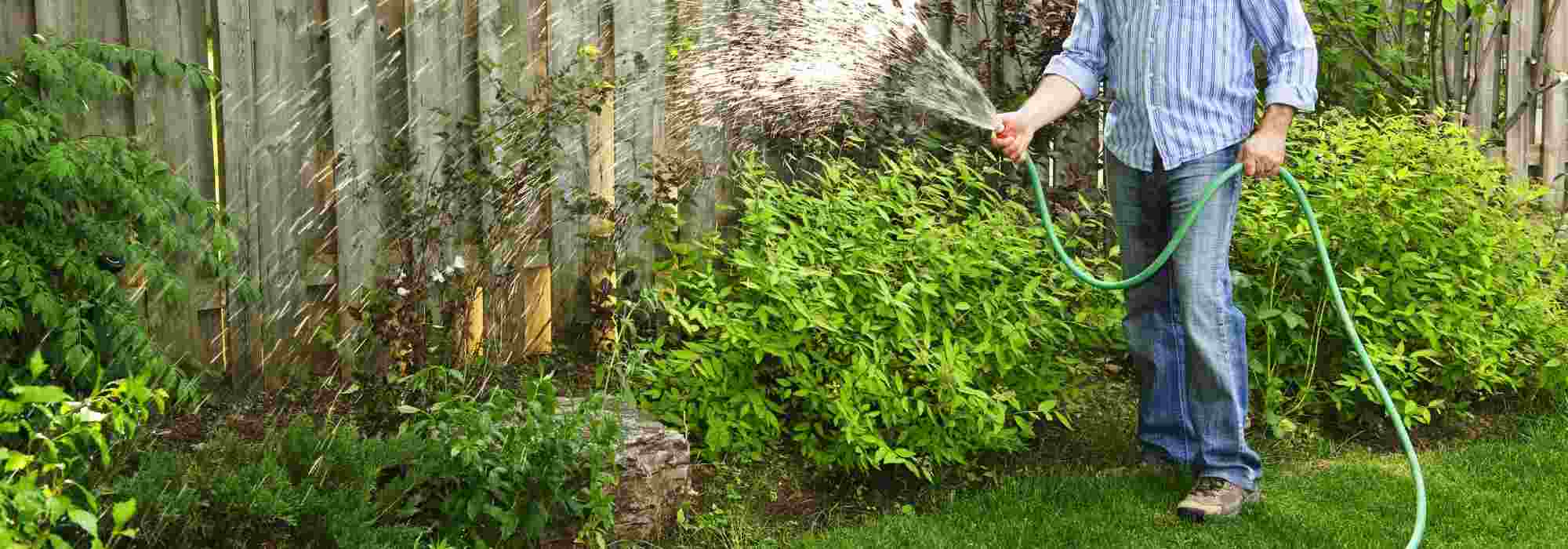
Soil moisture in the garden: how to define it?
Too much or not enough water? That's a problem!
Contents
Soil moisture is an essential factor when cultivating a garden. Water is a vital element for the life of plants: trees, bushes, perennials, annuals, and even vegetables and fruit trees. If there isn’t enough, frequent watering will be necessary, and if there is too much, the soil will need to be drained. First and foremost, it is important to know your soil to determine whether it is naturally too wet, too dry, or just right, meaning well-drained. But how can you gauge the soil moisture level? What does it mean to have soil that is too wet or, conversely, too dry? Let’s clarify this in this advice sheet.
Some definitions related to soil moisture
The world of gardening has its own language, and it can sometimes be complicated to truly understand what is being discussed when reading or listening to gardening experts. We have a fairly good idea of what a wet soil or a dry soil is. However, the concept of cool soil is much more ambiguous. Here’s, in a nutshell, what it entails:
- Wet soil: wet soil retains water, especially in winter. This is typical of heavy, clay-rich soils. Wet soils are found in the lowest points, as well as in naturally moist environments like former marshes. Wet soil is not necessarily a curse. Many plants thrive in this type of terrain, such as riverside and wetland plants, of course, but also those with lush foliage;
- Cool soil: cool soil is well-drained soil where water circulates effectively. Water does not stagnate in winter and penetrates well into the soil during summer rainfalls. Cool soil can accommodate a wide variety of plants. It is the best soil for growing a vegetable garden.
- Dry soil: dry soil is soil that does not retain water at all. Essentially, it is overly drained. This type of soil is found in sandy, rocky, or poor (low humus) terrains. Dry soils are nutrient-poor, as nutrients are not retained. In these soils, it is advisable to choose plants suited to drought with a very deep root system. Mediterranean flora or exotic plants from warm, dry regions thrive wonderfully here.
The moisture of a terrain is primarily defined by the physicochemical characteristics of the soil (clay content, humus level…), but also by the soil life, the terrain’s relief, and the climate. In soil with good structure, particles cluster into aggregates so that air, nutrients, and, importantly, water can circulate easily, but not too quickly.
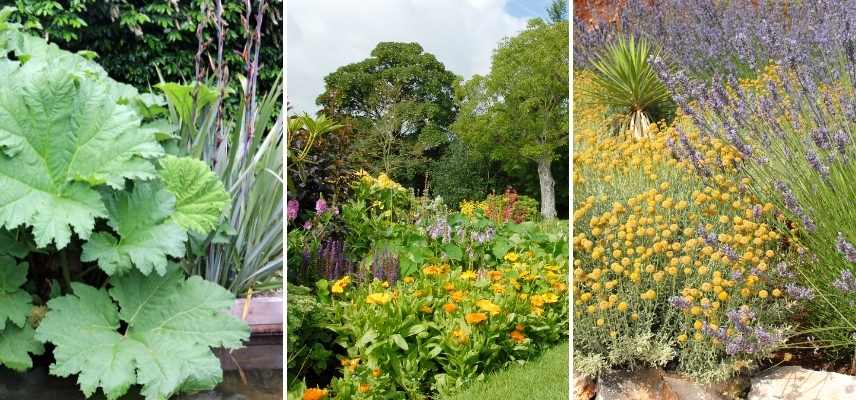 Wet, cool, or dry soil will not support the same types of plants.
Wet, cool, or dry soil will not support the same types of plants.
Why is humidity an important factor?
Simply because plants do not all have the same water requirements. Some thrive in heavy, moist soil, while others have adapted to dry, poor lands. As for fresh, well-drained soils, the range of plants is broader. This is why gardeners generally aim for structural improvement of the soil by adding organic matter, compost, manure… to enhance drainage and overall soil quality.
An overly moist soil will lead to a decrease in soil microorganism activity, a reduction in nutrient absorption, and a slowdown in root growth. If this is your case, follow François’s advice to improve your soil’s drainage.
An overly dry soil will not retain water or nutrients, leading to growth delays or even death for unsuitable plants. If this is your case, follow Alexandra’s advice to enhance your land, making it more fertile and less dry.
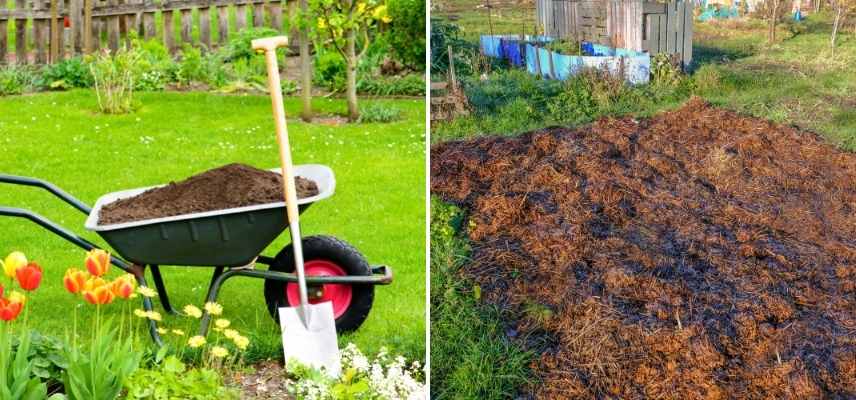 Soil structure can be improved by amending it with compost, manure, etc.
Soil structure can be improved by amending it with compost, manure, etc.
How to measure soil moisture content?
Farmers use probes to be driven into the soil at a certain depth to accurately assess the moisture level of the ground. There are also probes available in garden centres for gardeners, but these are often inaccurate, or even completely ineffective.
However, nothing beats the observation and experience of the gardener.
- If puddles of water remain for several days after heavy rain, that the soil is spongy and forms solid clumps when rolled in the palm of your hands, and that certain hygrophilous plants (fireweeds, comfreys, creeping buttercups or butterbur) thrive spontaneously: your soil is (too) wet;
- If the soil crumbles when rolled between your hands, that the ground always appears dry, and that plants of dry and poor soil grow naturally (mullein, stonecrop, sea holly, wood spurge…): your soil is (too) dry.
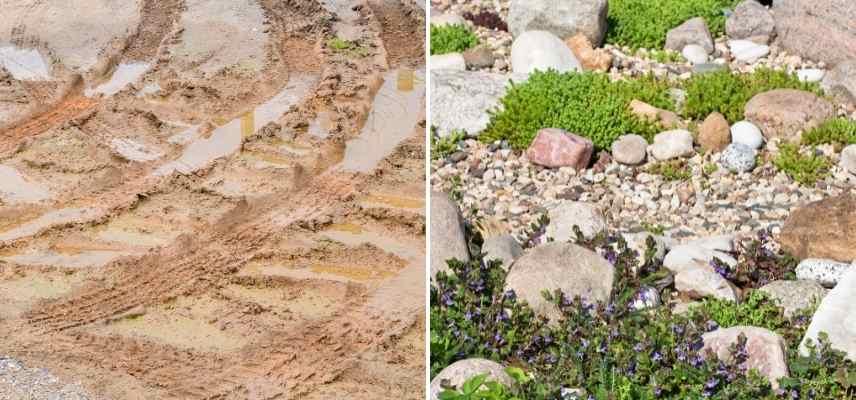 On the left, a clayey soil, on the right, a dry rocky soil
On the left, a clayey soil, on the right, a dry rocky soil
- Subscribe!
- Contents
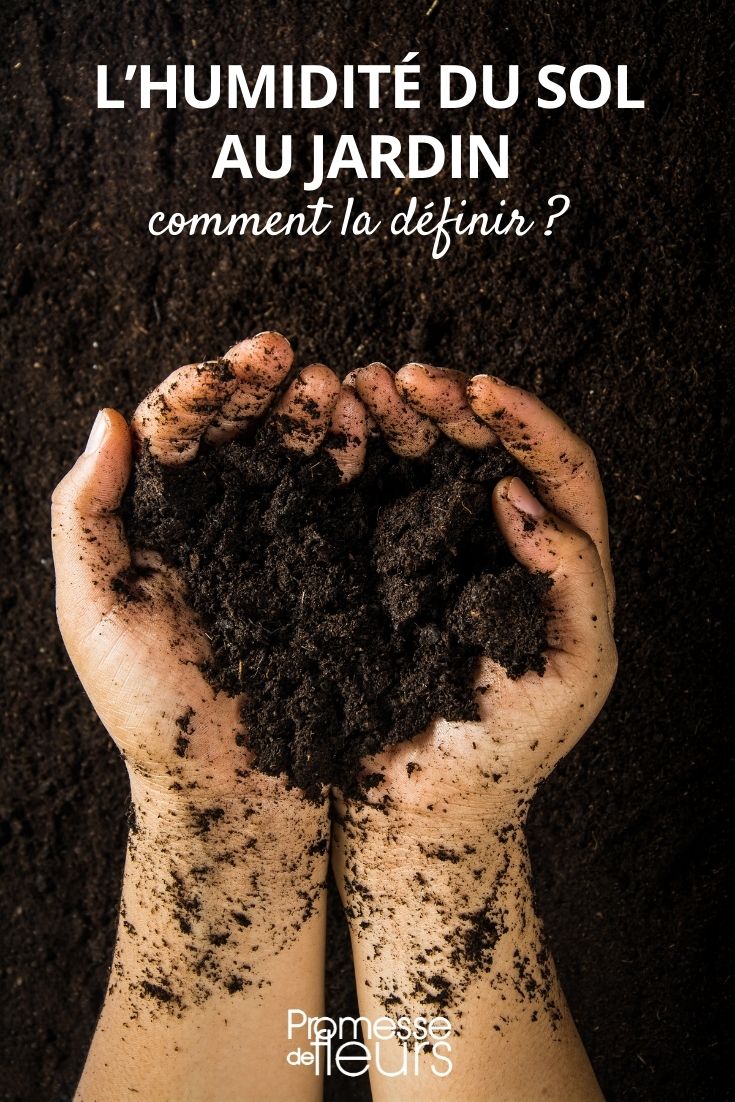































Comments